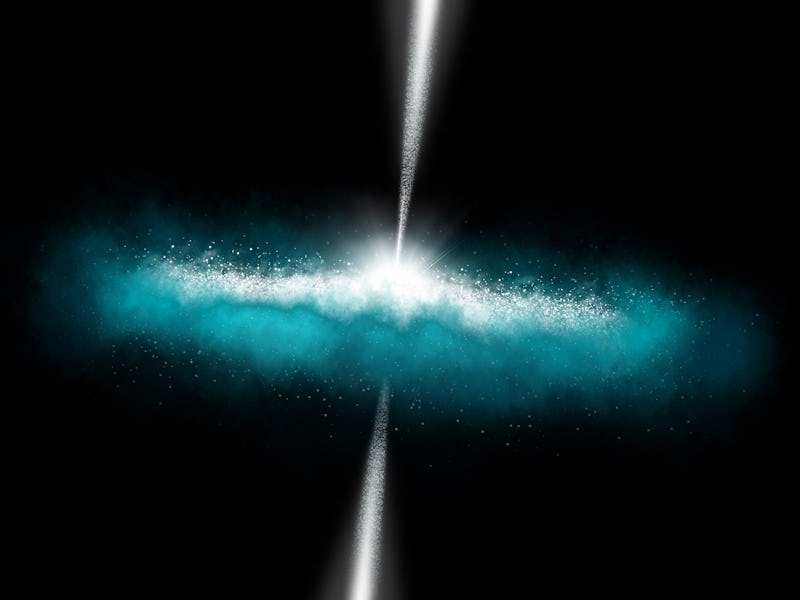Watch a black hole barf a jet stream of matter on its galactic neighbor
I’ll ... just have the chicken.

It doesn’t take much to be a good neighbor. Refrain from making too much noise, keep your nose where it belongs, and don’t encroach on other’s space — especially not to spew jets of cosmic matter on whoever lives next door.
The galaxy RAD12 is far from the ideal neighbor. Roughly one billion light years from Earth, citizen scientists and researchers spotted it spewing a jet stream of radio waves at nearby galaxy RAD12-B.
They described this peculiar behavior in a report published in the journal Monthly Notices of the Royal Astronomical Society: Letters this week.
Here’s the background — It took a group of citizen scientists sifting through telescope data to discover RAD12. The group, called RAD@Home, later confirmed their findings with a 2017 observation from India’s Giant Metrewave Radio Telescope.
The culprit behind RAD12’s eruptive behavior is a supermassive black hole at its center. Jets of radio waves have been discovered streaming from galactic centers before, but they often come in pairs.
Instead, RAD12 has just a single stream of matter blasting from its center. Researchers don’t really know why, but that’s part of the reason why RAD12 is an interesting target to study.
What we know — RAD12 and its neighbor, RAD12-B, are actually in the process of merging. Both are elliptical galaxies, which means they are dim, have low concentrations of stars, and are shaped like ovals.
RAD12 is directly hitting RAD12-B with a stream of radio waves — the first time researchers have recorded this behavior.
In an animation published with the paper, the team visualized the blast from one galaxy to the other. Take a look:
Why it matters — Unlike spiral galaxies, such as the Milky Way, elliptical galaxies are not great at forming stars.
Researchers don’t understand why this is the case. But it likely has something to do with the conditions need for star formation, namely the presence of extremely cold gas and dust.
Elliptical galaxy NGC 4150.
Scientists think that jet streams radiating from black holes deplete the resources needed in galaxies to create stars. This process is not well understood, but observations of objects like RAD12 can help solve the mystery.